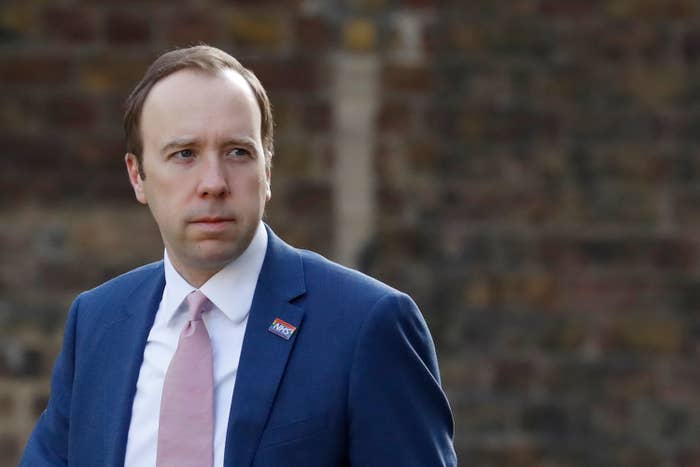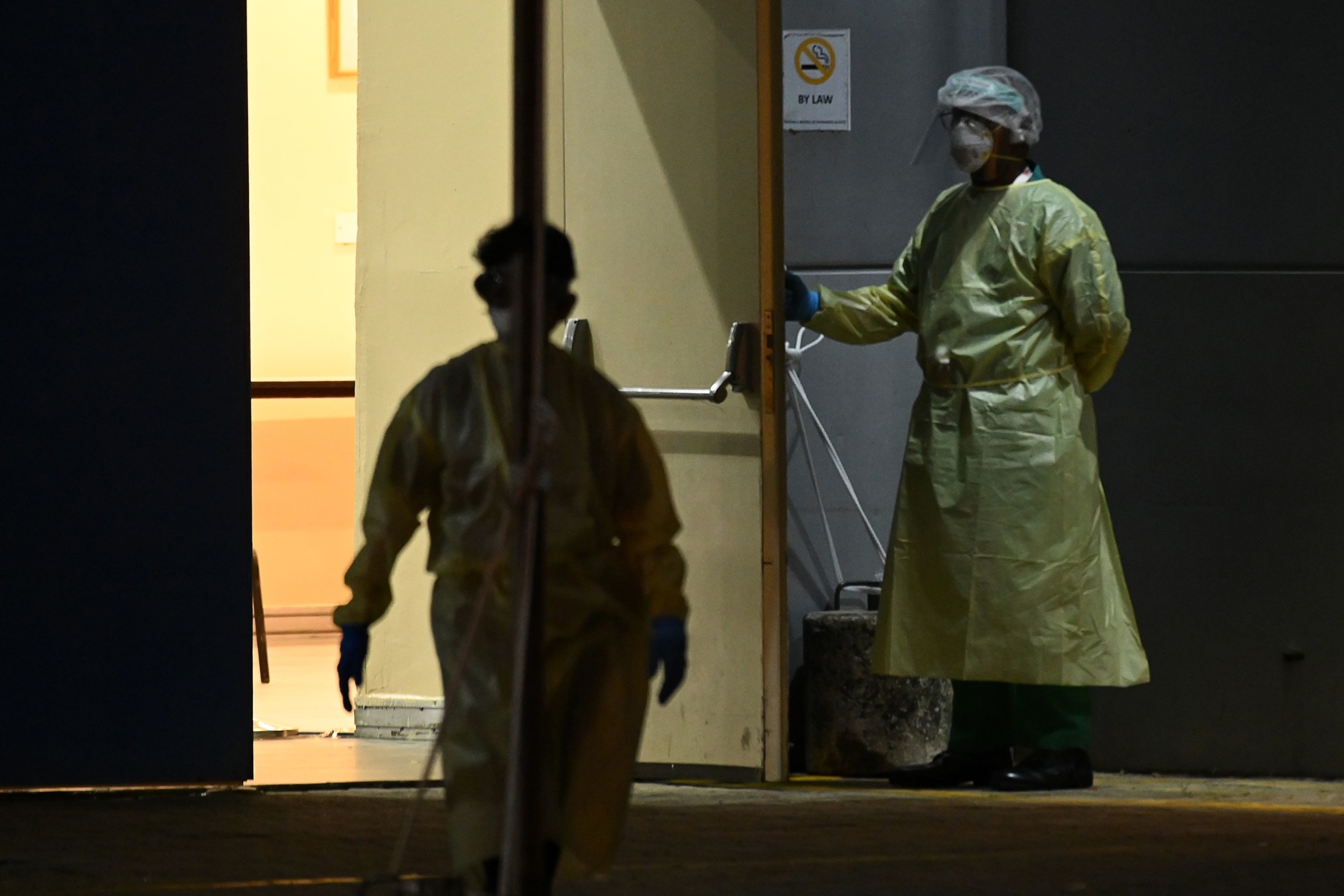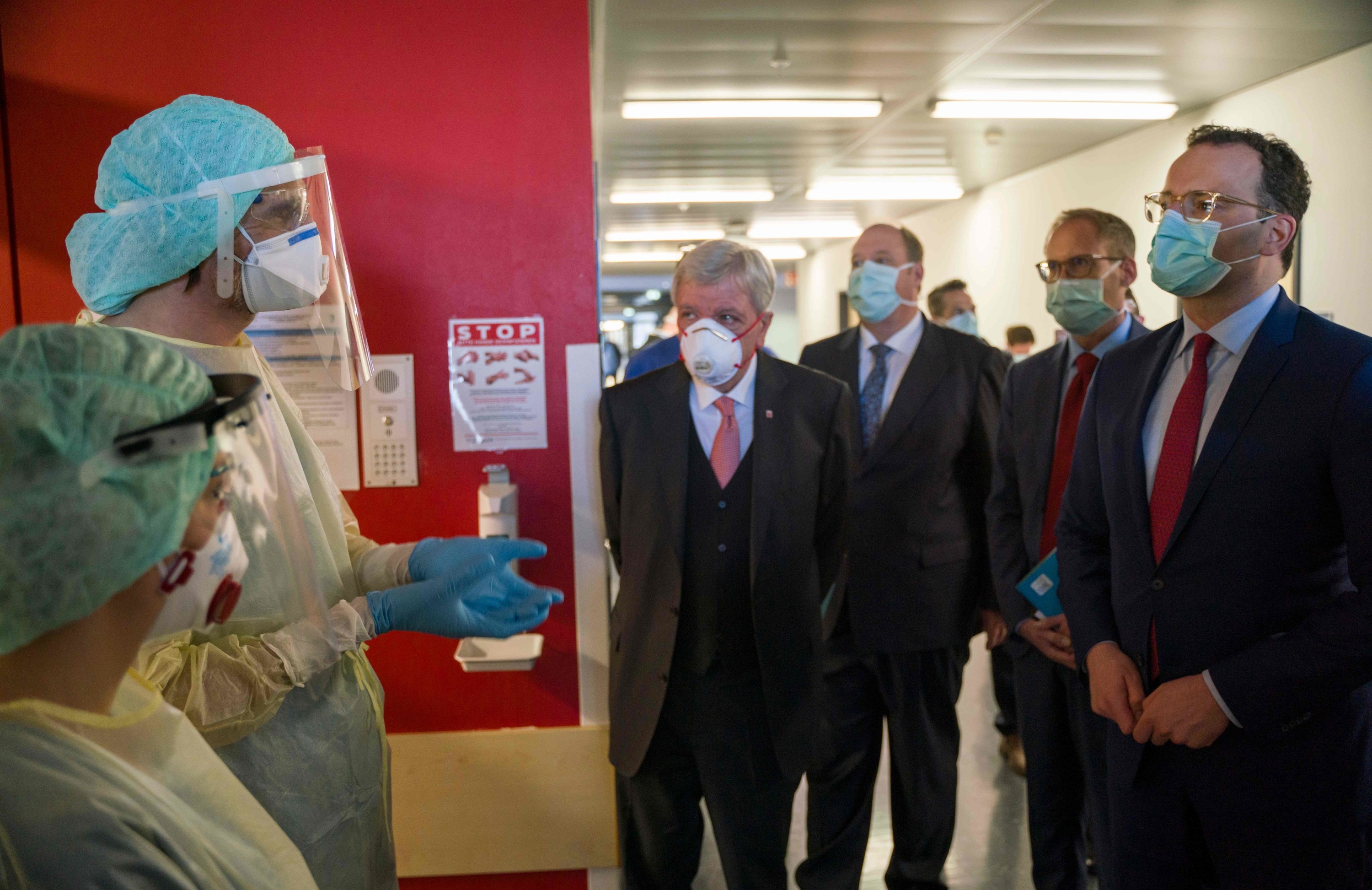The journalists at BuzzFeed News are proud to bring you trustworthy and relevant reporting about the coronavirus. To help keep this news free, become a member and sign up for our newsletter, Outbreak Today.

A widely publicised NHS contact tracing app announced by health secretary Matt Hancock will prove ineffective if it relies on technology alone, according to leading experts from other countries running similar schemes.
Hancock confirmed plans on Sunday for an app that will warn users if they have been in close proximity to someone who has reported coronavirus symptoms — but officials in nations such as Singapore have warned that such apps only work as a complement to mass testing and human-led contact tracing, not a replacement. The UK has fallen well short in these areas in recent weeks.
Several media reports, including from the BBC, reported that anyone diagnosed with the coronavirus would be able to flag their status through the app, automatically alerting other users with whom they’d been in close contact.
To determine who these contacts are, the app — which is being developed by NHSX, the health service’s technology arm — would use Bluetooth to identify mobile phones that have recently come in close proximity to each other, recording that information through the app.
Whitehall sources told the Sunday Times that the technology, combined with a massive scaling-up of testing, was a central plank of the government’s thinking on how to lift the current lockdown measures.
But experts with experience of deploying contact tracing apps in other countries, such as Singapore, have warned the technology needs to be coupled with human-led contact tracing to be effective.
The UK moved away from contact tracing when the government shifted from a strategy to contain the virus to one aimed at delaying it. Other countries have continued to trace contacts even as the virus spread and lockdowns were put in place.
Contact tracing is a process designed to slow the transmission of a disease by finding those who have been in close contact with someone who is sick as quickly as possible. Once contact is made, that person can be provided with relevant advice, and public health professionals can follow up and keep in contact as needed.
Combined with mass testing, it is seen as a crucial component of any strategy to gradually lift the lockdowns, thereby limiting the economic and social damage. Taken together, at scale, testing and contact tracing help identify, track, and isolate cases and the further spread of the virus, stopping the chain of transmission.

In a blog post published earlier this week, a government official behind Singapore’s contact tracing app wrote: “If you ask me whether any Bluetooth contact tracing system deployed or under development, anywhere in the world, is ready to replace manual contact tracing, I will say without qualification that the answer is, ‘No’.”
Jason Bay, the senior director of the Singapore government’s digital services agency, added: “You cannot ‘big data’ your way out of a ‘no data’ situation. Period.”
In the post, titled “Automated Contact Tracing Is Not a Coronavirus Panacea”, Bay went on to say: “We use TraceTogether to supplement contact tracing — not replace it.”
Singapore’s TraceTogether app was launched in mid-March. Previously, contact tracing relied on the memory of interviewees who tested positive for the coronavirus and were asked to recall all their recent contacts and movements in detail.
The app works by exchanging short-distance Bluetooth signals between phones to detect other app users in close proximity, recording those encounters over time so that when someone tests positive for the virus, that information can be more easily shared with contact tracers.
However, Bluetooth-based contact tracing solutions do not, by themselves, record location and environment data — that means it can’t tell where contact between mobile phones actually took place, whether, for example, it occurred in a park or in adjacent rooms of the same building.
As a result, any automated mechanism will necessarily generate both false negatives and false positives.
Further, the technology does not automatically reveal the identity of the user behind a mobile phone and number. All this information still needs to be gathered by a human-led process of interviews.
A partnership between Google and Apple announced earlier this month will help with mass user adoption — which is a prerequisite to any solution functioning effectively — and to overcome technical challenges such as gathering data while an app is in the background and not being actively used.
But the solution would still be reliant on Bluetooth, according to the specifications released by Apple: "The Contact Tracing Bluetooth Specification does not use location for proximity detection. It strictly uses Bluetooth beaconing to detect proximity."
The technology behind the NHSX app is understood to work in a similar way to Singapore’s app. Once installed, the app will log the distance between a user's phone and other phones nearby that also have the app installed. It uses a low-energy form of Bluetooth to calculate the distance between users by measuring the signal strength of their respective devices. A log of anonymous proximity information is stored securely on a user's phone.
The decision of precisely which other app users should be notified will be determined by a "contact risk model" within the app — which will be continuously updated to make it as accurate as possible, an NHS source told BuzzFeed News.
Singapore’s TraceTogether app has some 1 million users — about a sixth of the population — and the island nation has open-sourced the code and made the underlying protocol available to governments and organisations in other countries.
A white paper that accompanied the release underlines the need to use an app in conjunction with human-led contact tracing. The paper says: “A human-out-of-the-loop system will certainly yield better results than having no system at all, but where a competent human-in-the-loop system with sufficient capacity exists, we caution against an over-reliance on technology.”
It concludes: “The experience of Singapore’s contact tracers suggest that contact tracing should remain a human-fronted process. Contact tracing involves an intensive sequence of difficult and anxiety-laden conversations, and it is the role of a contact tracer to explain how a close contact might have been exposed — while respecting patient privacy — and provide assurance and guidance on next steps.”
Asked about the number of people involved in contact tracing, a Singaporean government spokesperson referred BuzzFeed News to a statement made by the health minister to the country’s Parliament in March. The minister said that up to 4,000 contacts could be traced each day and that contact tracing capacity had grown from 3 to 20 teams and would continue to scale up as needed.
Up until mid-March, Public Health England had traced some 3,500 people in total, including on flights and cruises, with 3% of contacts found to be positive during the containment phase of the outbreak and advised to self-isolate. According to a report in the Guardian, PHE's contact tracing response team consisted of just under 300 staffers at the time.
But contact tracing was scaled back in the UK when the number of cases started growing exponentially and the government strategy changed from containing the virus to delaying its spread.
A key factor in this decision was the limited testing resources the UK had put in place. While Singapore has been testing at a rate of about 12,800 per million people, the UK has managed only about 6,044 tests per million people.
After coming under widespread criticism, the government has pledged to increase testing capacity to 100,000 tests a day by the end of the month, but it's still well short — on Tuesday, it conducted fewer than 16,000 tests.
When the UK recorded its first COVID-19 cases at the end of January, PHE said it was tracing people who had been in contact with the infected.
After tracing was scaled back, a PHE spokesperson told the Guardian that contact tracing was no longer useful because “with such a level of sustained community transmission there is limited value in doing so”.
The official PHE blog charts this shift in strategy.
On Feb. 13, Nick Phin, deputy director at PHE’s National Infection Service, wrote: "At the moment we undertake contact tracing to prevent the infection spreading further. Contact tracing is a fundamental part of outbreak control that’s used by public health professionals around the world."
The updated coronavirus information page now reads: “In the contain phase of the outbreak, we were identifying all cases, tracing their contacts and following up with them to determine their level of risk and giving them advice and information on what to do should they become unwell.
“Now, because the virus is more widespread, we will not necessarily be able to determine where someone has contracted the virus and we will have a more targeted approach to contact tracing.
“The targeted approach will likely include tracing close contacts of vulnerable people. For example, those in care homes or other institutions.”
A PHE source told BuzzFeed News that contact tracing would have a role in preventing a resurgence of the virus. Using the experience gained during the contain phase, PHE has carefully designed plans to scale up contact tracing rapidly if needed, they said. PHE was also strengthening surveillance activities to monitor the impact of outbreaks to support local contact tracing.

Other countries with comparable population sizes to the UK have also continued to aggressively trace contacts even as they went into lockdown.
Nearly three months since recording its first coronavirus cases, Germany has conducted more than 1.3 million tests. Contact tracing remains central to its strategy and is regarded as one of the most important tools to slow the spread of the virus, the government’s central scientific institute, the Robert Koch Institute, told BuzzFeed News last week.
German media reported in March that the RKI received 11,000 applications for “containment scouts” to support its contact tracing efforts. The RKI told BuzzFeed News on Wednesday that 500 people will be hired centrally, but the institute has no national overview of how many more will have been hired to work on contact tracing in the country's 400 different local health departments.
Germany is among a number of European countries that are also in the process of developing an app that works with Bluetooth. Virologists advising the government say the app would need mass adoption among the population and for users to comply with any quarantine measures to be effective.
The Department of Health and Social Care, NHSX, and PHE declined to provide on-the-record comments for this story.

